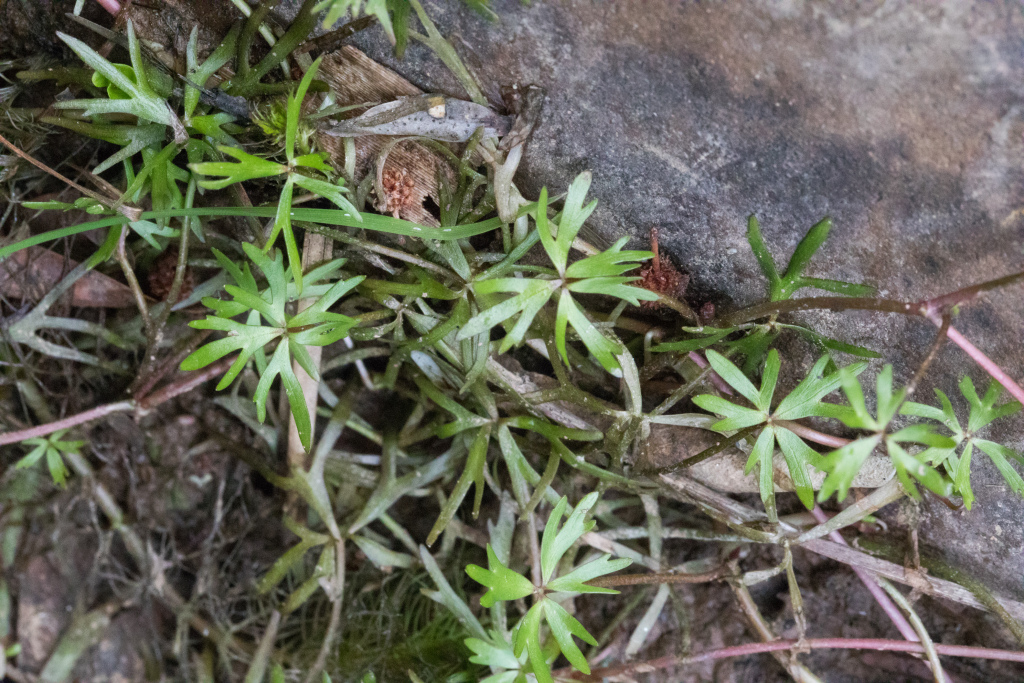Ranunculus amphitrichus
Colenso Small River ButtercupVariable, partially or completely submerged stoloniferous perennial. Leaves usually arising singly at nodes; petioles 1–15 cm long; lamina c. circular in outline, 1–5 cm diam., glabrous, deeply 3–5-lobed with entire or notched, ovate to cuneate segments (emergent form) varying to palmatisect with linear segments 1–3 mm wide (submerged form). Flowering stems usually emergent usually 1–4-flowered; sepals 4 or 5, spreading, broadly ovate, 2–3 mm long, glabrous; petals 4–9, oblong to narrowly obovate, 3–5 mm long, 0.5–2 mm wide, pale yellow-green or yellow; nectary a crescentic swelling c. one-third from base of petal, lobe absent; stamens c. 10–18. Achenes usually 6–15, obliquely obovate, biconvex, 1.5–2 mm long (excluding beak), smooth or slightly wrinkled or warted on sides when mature; beak slender, straight or slightly curved, 1–1.5 mm long; receptacle pitted, glabrous or with few hairs in the staminal zone. Flowers Oct.–Dec.
GleP, Brid, VVP, VRiv, MuF, GipP, OtP, WaP, Gold, CVU, GGr, DunT, NIS, EGL, EGU, WPro, HSF, HNF, OtR, Strz, MonT, HFE, VAlp. Also WA, SA, NSW, ACT, Tas. New Zealand. Fairly widespread on and south of the Dividing Range, occurring in swamps, lakes and slow-flowing streams and rivers from near sea-level to the subalps.
Walsh, N.G. (1996). Ranunculaceae. In: Walsh, N.G.; Entwisle, T.J., Flora of Victoria Vol. 3, Dicotyledons Winteraceae to Myrtaceae, pp. 35–63. Inkata Press, Melbourne.
 Spinning
Spinning




